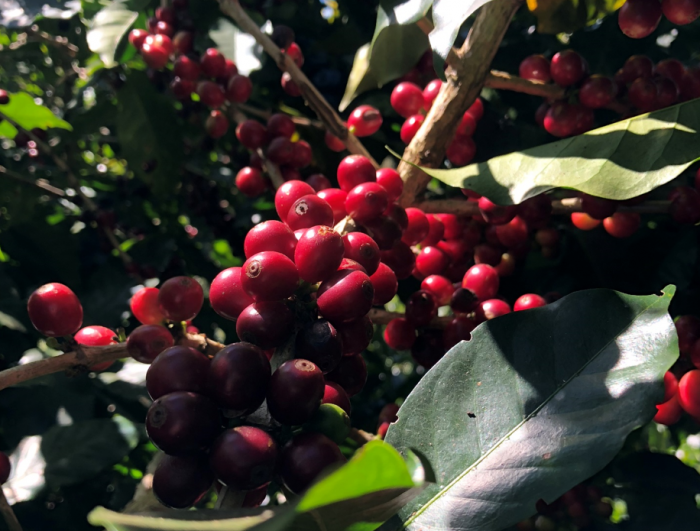Article reposted with permission from The New York Coffee Festival team: https://www.newyorkcoffeefestival.com/Blog/July-2019/Origin-Story
HAVE YOU EVER THOUGHT ABOUT THE STORY BEHIND YOUR FAVORITE COFFEE?
WE ENLISTED ARMENIA COFFEE, COFFEE EXPERTS AND THE OFFICIAL GREEN BEAN SPONSOR OF #NYCF19, TO GIVE US THE LOWDOWN. EVERY REGION IS QUITE COMPLEX, BUT ARMENIA SHARES THE GENERAL CHARACTERISTICS AND FLAVOR PROFILES OF EACH.
SO SIT BACK, GRAB A CUP OF COFFEE AND GET READY TO LEARN A THING OR TWO ABOUT YOUR FAVORITE BEVERAGE.
South America
COLOMBIA
The traditional coffee regions, Medellin, Armenia and Manizales, are known for good acidity and medium body — a well-balanced cup of coffee! Common flavor notes include milk chocolate, cinnamon and mild red fruits.
In the south, such as in Narino and Huila, you’ll find bright coffees known for citrusy acidity and medium body. Whereas in the far north, Sierra Nevada coffees are known for heavier body with a milder acidity, often associated dark chocolate notes.
BRAZIL
Brazil is the world’s largest producer of coffee, yielding both Arabica and Robusta types, and is famous for being a part of the top espresso blends. Brazil arabicas are clear and sweet with medium body, low acidity and often some nuttiness in the cup.

Central America
GUATEMALA
Complex and full bodied, great Guatemala coffees have depth. Notes of chocolate and spices can be found and acidity can range from medium to high. Typically, the Huehuetenango region will yield a brighter cup with more lemony acidity, whereas a good Antigua will hold less acidy but a heavier body with strong dark chocolate notes.
HONDURAS
Honduras is the fastest growing of coffees from Central America. These coffees are characterized by their medium to high acidity and medium body, similar to a Mexican coffee. At Armenia, we prefer the coffees from the Marcala region for their clean cup and positive flavor profile!
COSTA RICA
From the jungle to the high mountains, Costa Rica has always been proud of its attention to detail and quality. Light body and sweet acidity are the trademark characteristics of Costa Rican coffee.

MEXICO
Over 100,000 farmers produce coffee from a great diversity of climate and altitudes, with top varieties coming from Vera Cruz, Oaxaca and Chiapas. Altura or High Grown is the designation used for some of the best coffees here. This coffee can generally be described as light body with medium acidity.
NICARAGUA
Nicaragua coffees generally come from Matagalpa and Jinotega and are known for their full-bodied, complex nature and medium acidity.
USA
HAWAII
Coffee is produced throughout the islands of Hawaii, but the island of Kona is the best known. Kona coffee is carefully processed and highly regulated — the best is rich with bright aromatic cup and good notable acidity and body.

Caribbean
JAMAICA
Jamaica produces one of the most outstanding coffees in the world and the best is grown in the Blue Mountain ranges of the island, which is among the highest altitudes in the world of coffee. Many credit the cool, misty mornings for the good balance of acidity and body. Blue Mountain coffee is highly regulated by the Jamaican Coffee Board and the famous barrels each contain a certificate detailing authenticity.
Africa
ETHIOPIA
Have you heard the story of the goat farmer who is credited with the discovery of coffee as we know it? Many believe that Ethiopia is the origination of the legend and the bean.
There are as many tastes and aromas as there are coffees themselves. This is an origin to get to know – coffees from this region are considered among the best the world produces. The best washed coffees are renowned for their citrus acidity and interesting flavors like black tea and lemongrass.
The best natural Ethiopia’s exhibit a strong fruity flavor and wildness that seem to be growing recently in popularity. They are a bit of an acquired taste!

KENYA
High acidity and sweetness are the hallmark of the coffees from Kenya. Offering amazing complexity in the cup, it’s been referred to as the “tea drinkers” coffee. Bright but with lighter body, notes of tropical fruits, lemon zest, and tomatoes are commonly found in a nice cupping Kenyan.
Asia
INDONESIA
A diverse coffee producer with one of the main producing islands synonymous with the beverage itself. Java, Sumatra and Sulawesi are well known for their quality production and each island brings its own signatures.
Traditional Sumatra coffees are semi-washed and are particularly known for their heavy earthy flavor, syrupy body, and low acidity. We’re also seeing an increasing number of lots that are less earthy and brighter, and these coffees are particularly nice as an unblended varietal.
Indonesia also produces “aged” coffees – held in warehouses and tended in a special traditional manner, this method produces even deeper body and less acidity.

PAPUA NEW GUINEA
Coffee is the second largest crop in Papua New Guinea. Papua New Guinea coffees are complex and balance with a sweet acidity and medium body. At Armenia, we are especially fond of the Plantation coffees from Sigri in the western highlands near Mount Hagen.
